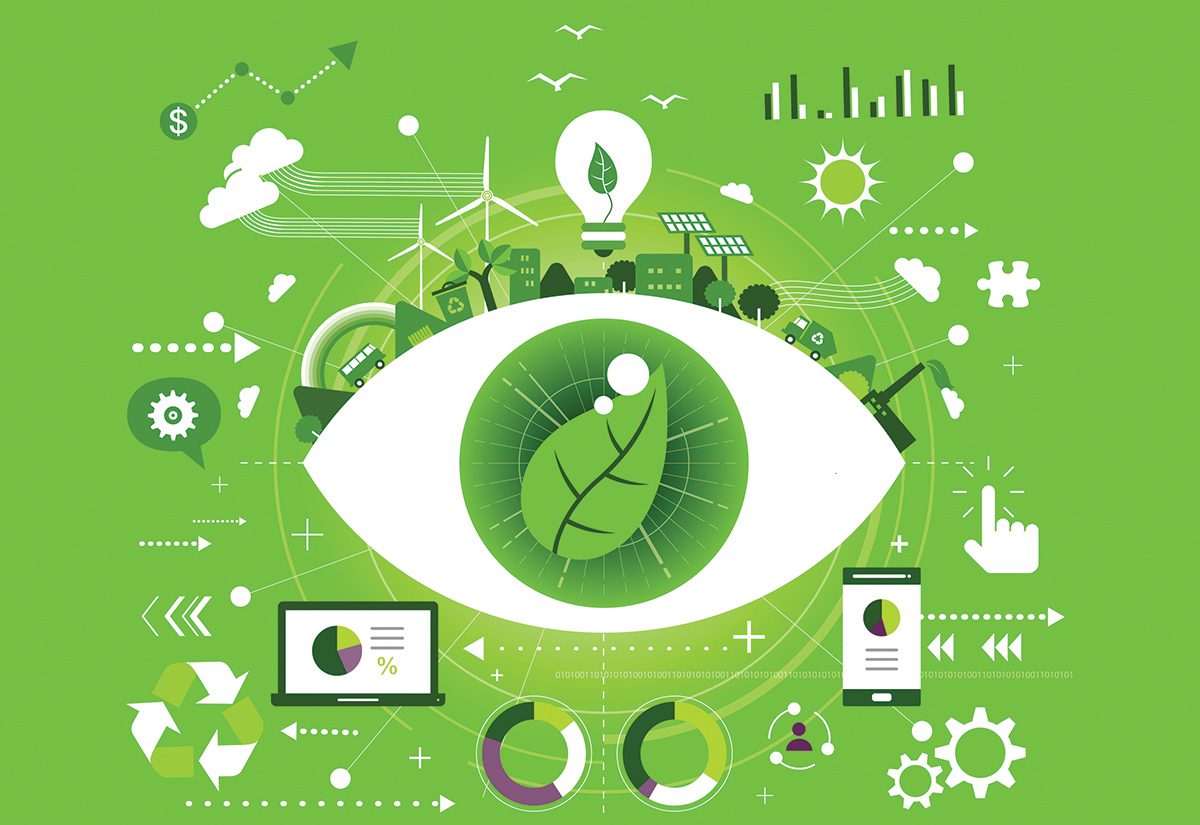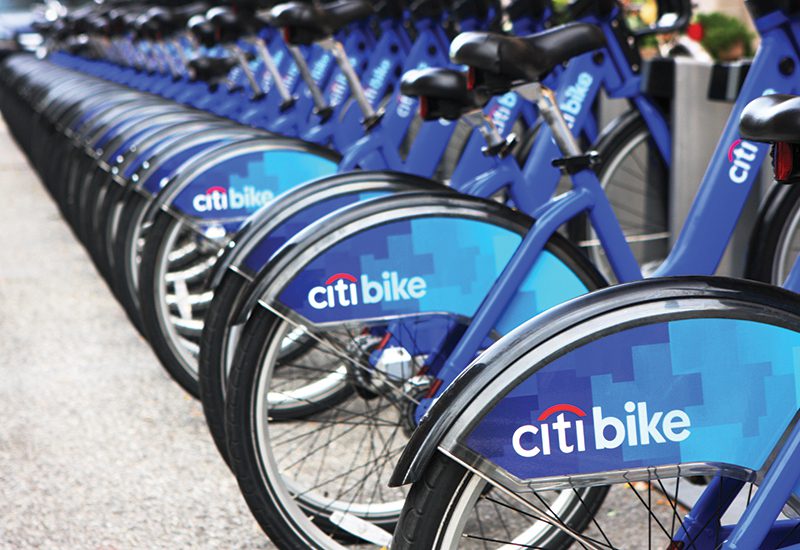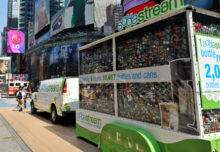We tend to think of event sustainability in terms of large, sweeping efforts that require big budgets and run the risk of disrupting the attendee experience. But there are smaller eco-friendly tweaks to be made that have the potential to add up to big change—all while upholding, or even enhancing, the experience. And the growing number of attendees who not only accept, but embrace, thoughtful, eco-driven event modifications are making the process that much smoother. So we broke down a mix of 10 b-to-b and b-to-c sustainability ideas to implement at your next event. Get your mood board handy: your tutorial begins now.
1. Reduce Water Waste
Water waste, not to be confused with waste water, is a big offender at events, particularly meetings and conferences. The resource is often squandered through the use of filled ice buckets, pre-filled water glasses at meals, single-use water bottles and menus that are heavy on meat (more on that in a moment). Try keeping ice buckets chilled, rather than packing them with ice, and waiting until attendees arrive before pouring water to avoid filling unneeded glasses. Also think about distributing branded, reusable water bottles, complemented by ample water refill stations, to ensure that attendees have ample access to water—but aren’t wasting it. Finally, look for venues that offer infrastructure efficiencies, like low-flow toilets and sink faucets, which can result in significant conservation.
 More Event Sustainability Strategies:
More Event Sustainability Strategies:
- The State of Sustainability: From Venue Perspectives to the ‘Pandemic Effect’
- World of Concrete’s Director Offers Five Tips on Building a More Sustainable Event
2. Provide Eco-friendly Swag
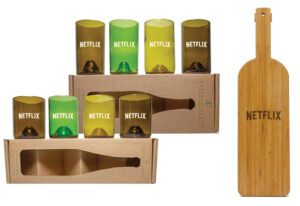 We’ve all seen a trade show floor or festival footprint littered with deserted brand swag that ultimately ends up in a landfill. And marketers agree it’s time to be more prudent about those freebies. That was the sentiment when we spoke to Jackie Burke, senior director-national accounts marketing off-premise at Constellation Brands: “We’re buying sustainable swag, focusing less on that leave-behind. If it’s not something that we think someone really wants or is going to use, we’re just not going to do it.”
We’ve all seen a trade show floor or festival footprint littered with deserted brand swag that ultimately ends up in a landfill. And marketers agree it’s time to be more prudent about those freebies. That was the sentiment when we spoke to Jackie Burke, senior director-national accounts marketing off-premise at Constellation Brands: “We’re buying sustainable swag, focusing less on that leave-behind. If it’s not something that we think someone really wants or is going to use, we’re just not going to do it.”
Partnering with sustainability-focused vendors is a good place to start. Ethical Swag, for instance, is a Certified B Corporation that offers customized sustainable goods sourced from suppliers that have passed strict environmental impact audits. The organization focuses on products that are organic, recycled and/or biodegradable, and minimizing its carbon footprint when it comes to shipping.
3. Employ Conscious Consumption
 Conscious consumption entails being mindful about all elements of the food consumption process at an event. There’s currently a significant focus on serving plant-based foods, which have taken the world by storm, but are more than a dietary trend—they’re a means of reducing an event’s carbon footprint. Meat, particularly beef, and animal byproducts, are substantial contributors to greenhouse gas emissions. They also require significantly more water to produce. For instance, Impossible Foods’ research shows that the production process for its plant-based burgers requires 87 percent less water than that of a beef-based burger. Plus, according to the National Restaurant Association’s “What’s Hot: 2022 Culinary Forecast,” plant-based proteins, streamlined menus (read: fewer meal options) and zero-waste culinary practices like composting and upcycling, are leading culinary trends across the board. And remember: if you’ve got a grab-and-go F&B strategy at your event, meals should be packaged in sustainable containers.
Conscious consumption entails being mindful about all elements of the food consumption process at an event. There’s currently a significant focus on serving plant-based foods, which have taken the world by storm, but are more than a dietary trend—they’re a means of reducing an event’s carbon footprint. Meat, particularly beef, and animal byproducts, are substantial contributors to greenhouse gas emissions. They also require significantly more water to produce. For instance, Impossible Foods’ research shows that the production process for its plant-based burgers requires 87 percent less water than that of a beef-based burger. Plus, according to the National Restaurant Association’s “What’s Hot: 2022 Culinary Forecast,” plant-based proteins, streamlined menus (read: fewer meal options) and zero-waste culinary practices like composting and upcycling, are leading culinary trends across the board. And remember: if you’ve got a grab-and-go F&B strategy at your event, meals should be packaged in sustainable containers.
4. Incorporate Eco-friendly Signage and Exhibit Materials
Signage and exhibit materials have historically been responsible for a significant amount of event waste, but the tides are turning as brands take a harder look at their ecological impact. Take a cue from the array of event marketers that are now either reusing signs and exhibit items, or incorporating ones built with recyclable and/or biodegradable materials (hint: paper beats plastic). Some are also reducing their event signage overall, opting for quality over quantity without compromising attendees’ ability to navigate the experience.
5. Reduce Medical Waste
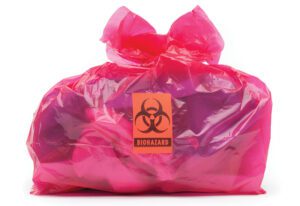 The pandemic continues to result in a tsunami of medical waste, from masks and other forms of PPE, to COVID test kits, to vaccine vials—and the majority of it ends up in the trash. For event marketers that are distributing or utilizing some of these materials as part of their health and safety protocols at events, it’s worth taking the World Health Organization’s advice, and looking for eco-friendly packaging, reusable PPE and/or PPE made from recyclable or biodegradable materials wherever possible. Also keep an eye out for vendors that recycle medical waste, not just dispose of it. Like TerraCycle, a waste management company that operates in 22 countries and specializes in recycling hard-to-recycle materials at events, restaurants and beyond.
The pandemic continues to result in a tsunami of medical waste, from masks and other forms of PPE, to COVID test kits, to vaccine vials—and the majority of it ends up in the trash. For event marketers that are distributing or utilizing some of these materials as part of their health and safety protocols at events, it’s worth taking the World Health Organization’s advice, and looking for eco-friendly packaging, reusable PPE and/or PPE made from recyclable or biodegradable materials wherever possible. Also keep an eye out for vendors that recycle medical waste, not just dispose of it. Like TerraCycle, a waste management company that operates in 22 countries and specializes in recycling hard-to-recycle materials at events, restaurants and beyond.
6. Add a Carbon Offset Fee to Registration
It’s becoming fairly common practice for brands to purchase carbon offsets that reduce the carbon footprint of their events. The idea is to put money towards a project or initiative that helps the planet (like planting trees) to compensate for actions that contribute to harming the environment (like air travel to an event). But the cost of these offsets is rising. One idea to tackle the growing expense? Add all or part of the carbon offset price to registration fees, and use it as an opportunity to introduce attendees to your broader sustainability efforts. You could also make the fee voluntary—as more and more attendees become conscious of their own environmental impact, plenty will opt-in.
7. Develop a Green Transportation Strategy
Even if attendees aren’t hopping on planes to come to your live experience, there’s typically a fair amount of travel involved in getting to, from and around larger events. Group transportation is key to reducing an event’s environmental impact in this arena. When implemented efficiently, buses, rideshares and shuttles that run at specific hours are viable options (with bonus points for using electric or hybrid vehicles), as is encouraging attendees to walk or utilize mass transit—and providing them with pertinent scheduling and accessibility information ahead of time to make the process hassle-free. You could even incentivize the use of public transportation and ridesharing. Another fun option for a more sustainable transportation strategy is utilizing bicycles, whether it’s pedicabs or bike-share programs.
8. Transfer Printed Materials to the Event App
 Events are often supported by an app that helps attendees navigate the experience. So why not ditch printed event materials and bring it all to the app? It’s a straightforward way to reduce paper waste by a considerable amount, and gives attendees access to all of the event info they need with a few taps of their smartphone. If you do go this route, ensure the transition is user-friendly. That was the strategy for the 47th annual World of Concrete trade show this year. Organizers completely did away with printed materials and put all pertinent information in the event app, all without disorienting attendees.
Events are often supported by an app that helps attendees navigate the experience. So why not ditch printed event materials and bring it all to the app? It’s a straightforward way to reduce paper waste by a considerable amount, and gives attendees access to all of the event info they need with a few taps of their smartphone. If you do go this route, ensure the transition is user-friendly. That was the strategy for the 47th annual World of Concrete trade show this year. Organizers completely did away with printed materials and put all pertinent information in the event app, all without disorienting attendees.
“We started using a pre-show planner that we’d always had just prior to the show, which was digital and very well-received,” says Jackie James, group director at World of Concrete. “We decided we’ll mail it twice—we’ll make it the pre-show planner and we’ll make it the online [guide]. Everything’s connected; it’s all linked. That has worked very well and we no longer print 60,000 publications for handout, and distribution bins and such.”
9. Add a Sustainability Clause to Your RFP
Before selecting partners, particularly the venue, consider adding a sustainability clause to your RFP that ensures all parties will work to build a more environmentally-friendly event—because they’ll be contractually obligated to. The clause could include any number of sustainability specifications, from eliminating all single-use plastics to requiring that event items be purchased in bulk to using products that come without individual packaging, like bathroom soap. Energy-saving components could also be part of the deal, like ensuring the venue maximizes use of its HVAC system or uses natural daylight to cut back on electricity.
10. Offer Energy-saving Experiences
When it comes to sustainability, the beauty of experiential marketing is that there are a number of creative ways to get attendees actively contributing to a greener event while simultaneously participating in an activation. An industry go-to has been incorporating kinetic floors into events, which use the energy from attendees’ movement to power certain elements of the experience.
Take Mercedes, which offered an interactive energy-harvesting pathway at two of its Mercedes-EQ Experience pop-ups. Attendees were invited to walk across kinetic tech floor tiles that generated reusable clean energy. Another option: plus-up your wellness strategy by installing treadmills or stationary bikes that use participants’ steps or pedal strokes to produce clean electricity.
This story appeared in the Spring 2022 issue

